Bringing hope back to the desert, one well at time
Concerned citizens are doing the govt's job by building wells for people of drought-stricken Tharparkar
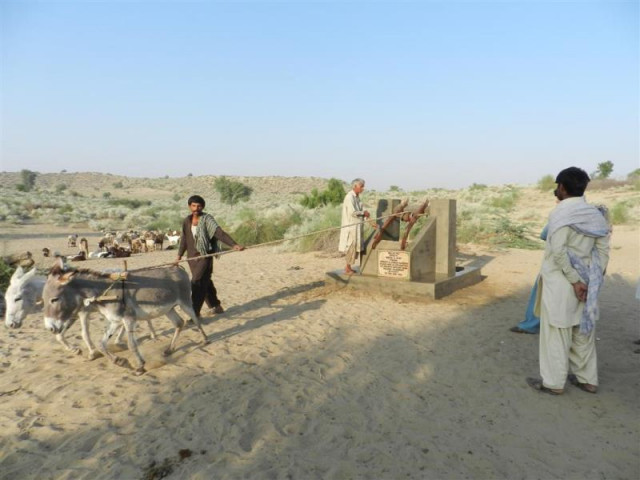
PHOTO: COURTESY FARHAT HAMEED
"We desperately needed water. Our existing well had dried up and we had no choice but to abandon our homes here and migrate to somewhere else where there could be water," explained Neela, who was in charge of the well that had dried up, leaving a group of 20 people without a single drop of water.
"We found the area but were unsure about our length of stay as the water there would barely be enough for the next six months," Neela said. She now lives in Miro Jo village in Kharo union council, Tarr Manthar taluka of Islamkot.
Islamkot is a town in the Tharparkar district. The city is well connected with other cities like Karachi and Hyderabad and has been an area of great interest for individuals, non-governmental organisations (NGOs), social welfare and trust societies run by students and the government due to its major water scarcity issue.
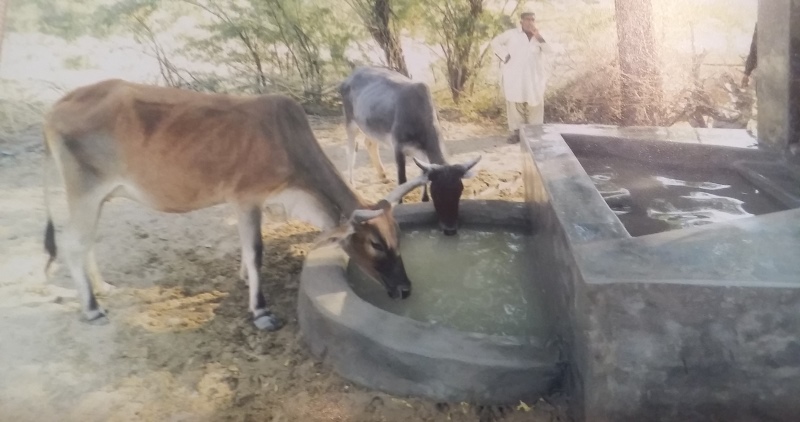 PHOTO: COURTESY FARHAT HAMEED
PHOTO: COURTESY FARHAT HAMEEDBaanhn Beli and the Thardeep Foundation are NGOs that have been working for years for the development of these areas and building new wells as well as redeveloping those that dried up years ago.
Former senator Javed Jabbar, the founding president of Baanhn Beli, said he had been working on overcoming the challenge for decades. "I started serving as a volunteer in 1985," he said.
The Social Welfare and Trust Society (SWAT), founded and run by the students of the Institute of Business Management (IoBM) have been working to provide villagers of Mithi wells since 2015.
Ruckus in Sindh Assembly as MPA stages 'sit-in' over water shortage in constituency
"In 2014, we saw in the media that Thar is facing a loss of lives due to malnutrition," the founder, Furqan Syed, told The Express Tribune. That is when they decided to travel to Mithi with the institute's executive director Sabina Mohsin along with ration packages for 1,000 families. But, after interacting with the locals, it dawned on them that "rations are not the solution, these people need water".
In 2015, this group of students collected their funds and ventured back, but this time to have wells dug.
In their first visit they had 22 wells dug. But the strategy they used paid off.
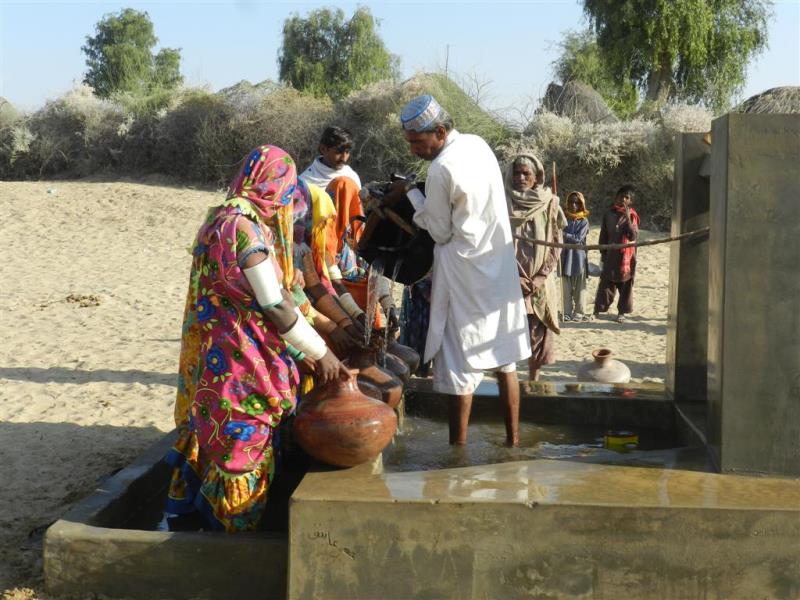 PHOTO: COURTESY FARHAT HAMEED
PHOTO: COURTESY FARHAT HAMEEDAs the villages are scattered around two to three kilometres apart, women have to walk to other villages for water and are not able to bring a substantial amount. "We had the wells dug in between the two villages, to lessen the distance," explained Syed.
During the society's third visit in 2016, they managed to have 11 wells dug. The cost of each well added up to Rs100,000.
Harnessing the sun
Thardeep Foundation Chief Executive Dr Allah Nawaz Samoo, who looks after the Mithi area, said they have been working to provide water to the villagers of Mithi as well as to other areas in Tharparkar for the past 20 years.
Water scarcity threatens mango crop in South Punjab
"We have now brought in new technology by introducing solar pumps," he said, explaining that solar pumps, which are used to pull water from tanks, save villagers a lot of money, labour and time. Traditionally, water is retrieved from wells by using two donkeys or camels. This method gives villagers two full buckets in six hours. Unfortunately, the animals are expensive.
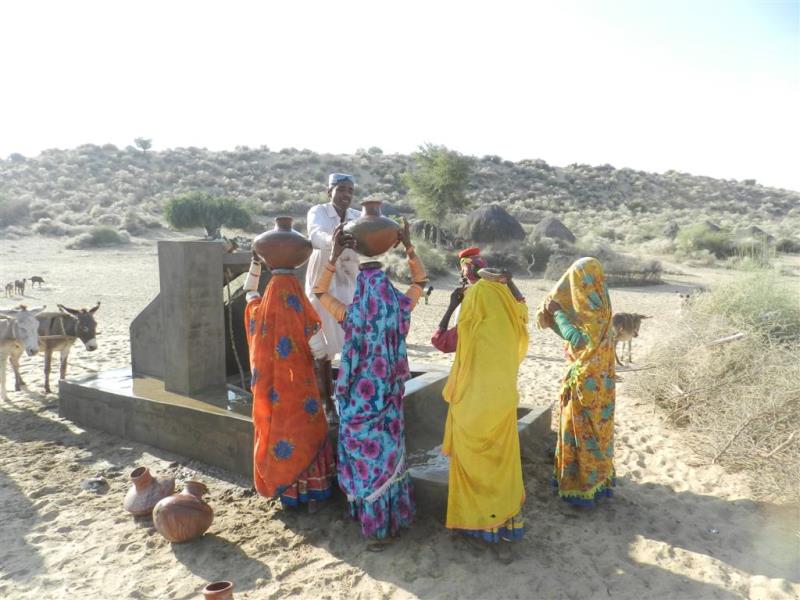 PHOTO: COURTESY FARHAT HAMEED
PHOTO: COURTESY FARHAT HAMEEDHowever, solar pumps are often even more expensive than the animals. That is where the Thardeep Foundation comes in. "Thardeep plays the role of the third party by buying goats from the villagers, selling them and paying for the pumps," explained Samoo. He added that the need for a third party developed because of 'trust issues' between the villagers and local proprietors.
For those villages that do not have wells and are keen to remedy this situation, the NGO provides them with material but the labour is done by the villagers themselves. "This is insurance for us that these people are serious about having a well and we know our money will not go to waste," he said.
Individuals have also started contributing for the construction of the wells in areas that were once populated but have now been abandoned due to lack of water. "I wanted to help the underprivileged when I heard about the initiative. One does not have to think twice. I have not visited the site but a friend who has financed two other wells does so on my behalf," said Tariq, who named the structure he financed after his mother.
 PHOTO: COURTESY FARHAT HAMEED
PHOTO: COURTESY FARHAT HAMEEDInitial donations financed the construction of hand pumps. Given their limited life span - seven years at the most - focus then shifted to the construction and maintenance of wells.
Lasting a maximum of 25 years, wells cost up to Rs50,000 but the expense increases with the well depth. A typical well is 200 feet deep. A company has been tasked with ensuring access to and testing the quality of water following the well's construction.
Residents of Sindh have nothing to celebrate on World Water Day
Sabeen Alam, a doctor by profession, wanted to contribute to the needy and told The Express Tribune that, "I visited Mithi last month and saw the state people live in, praying for a drop of water". She contacted a local contractor and, after deciding on a location, she paid half the amount and returned to Karachi. "I went back this week and was surprised to see that the area I had left barren now has children playing around," she added. Alam is happy that she was able to bring life back to the lives of a at least a few people.
When asked how the villagers draw water from the well, she said, "I have had a hand pump installed too, so they use that".
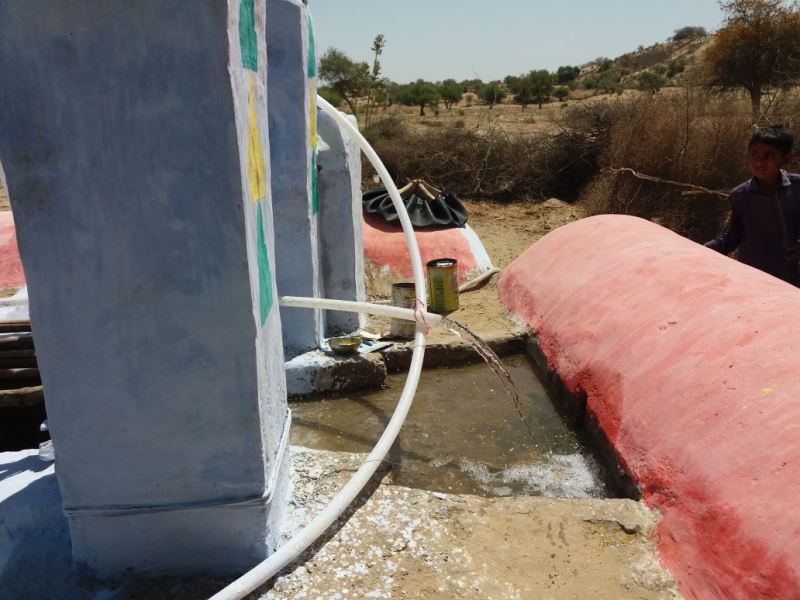 PHOTO: COURTESY FARHAT HAMEED
PHOTO: COURTESY FARHAT HAMEEDPeople have taken it on the responsibility to help provide these people with water and, as a result, villagers no longer have to leave their homes in search of water. Instead, villages have started forming around areas where the wells have been constructed.
Whose job is it anyway?
Providing water is actually the responsibility of the Sindh government which, in May 2013, started work on constructing 20 new water wells on an emergency basis, installing 20 hand pumps and two large tarais (water reservoir ponds) in the Ramji Jo Wandio village in Tharparkar.
In January 2015, former president Asif Ali Zardari inaugurated Asia's largest reverse osmosis plant in Mithi, Tharparkar. The plant has a capacity of filtering two million gallons per day.
Chief Minister Murad Ali Shah has said that the installation of reverse osmosis (RO) plants in water-starved areas, particularly Thar, was a revolutionary step to provide drinking water.
Water, water everywhere, not a drop to drink
However, while talking to The Express Tribune, a local resident, Ram Lal, said that some RO plants had stopped functioning due to non-availability of funds.
Officials at the plants revealed that neither has the government renewed the contracts nor has it released money for the maintenance and operation of RO plants. Almost 40 to 46 plants are closed. More than 600 will be shut down soon if the situation remains the same.
 PHOTO: COURTESY FARHAT HAMEED
PHOTO: COURTESY FARHAT HAMEEDJustice (retd) Amir Hani Muslim, who heads the Supreme Court-appointed judicial commission on water supply and sanitation in Sindh, visited Tharparkar recently.
The judge was accompanied by senior officials of the relevant departments during his inspection of various water reservoirs, water supply and drainage installations, banks of irrigation channels, and other such facilities.
Justice (retd) Muslim inspected RO plants in Misri Shah in the district headquarters and received a briefing from the officials. He was informed that many of the RO plants installed in the area non-operational.


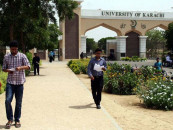







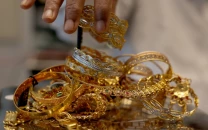








COMMENTS
Comments are moderated and generally will be posted if they are on-topic and not abusive.
For more information, please see our Comments FAQ